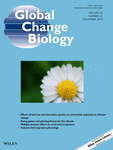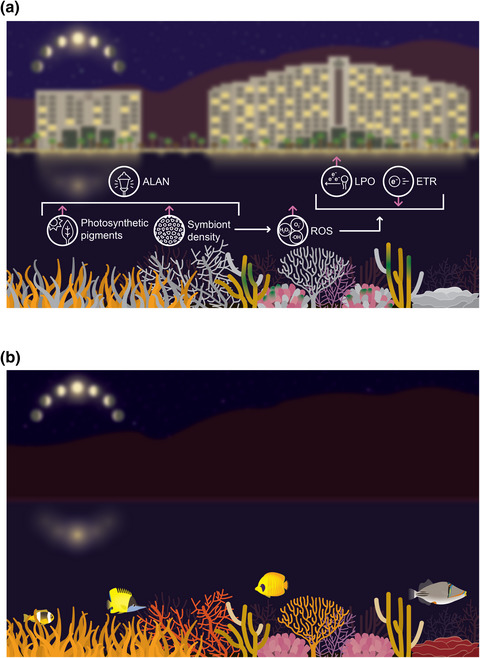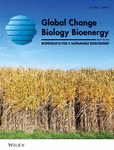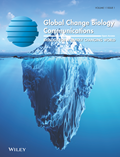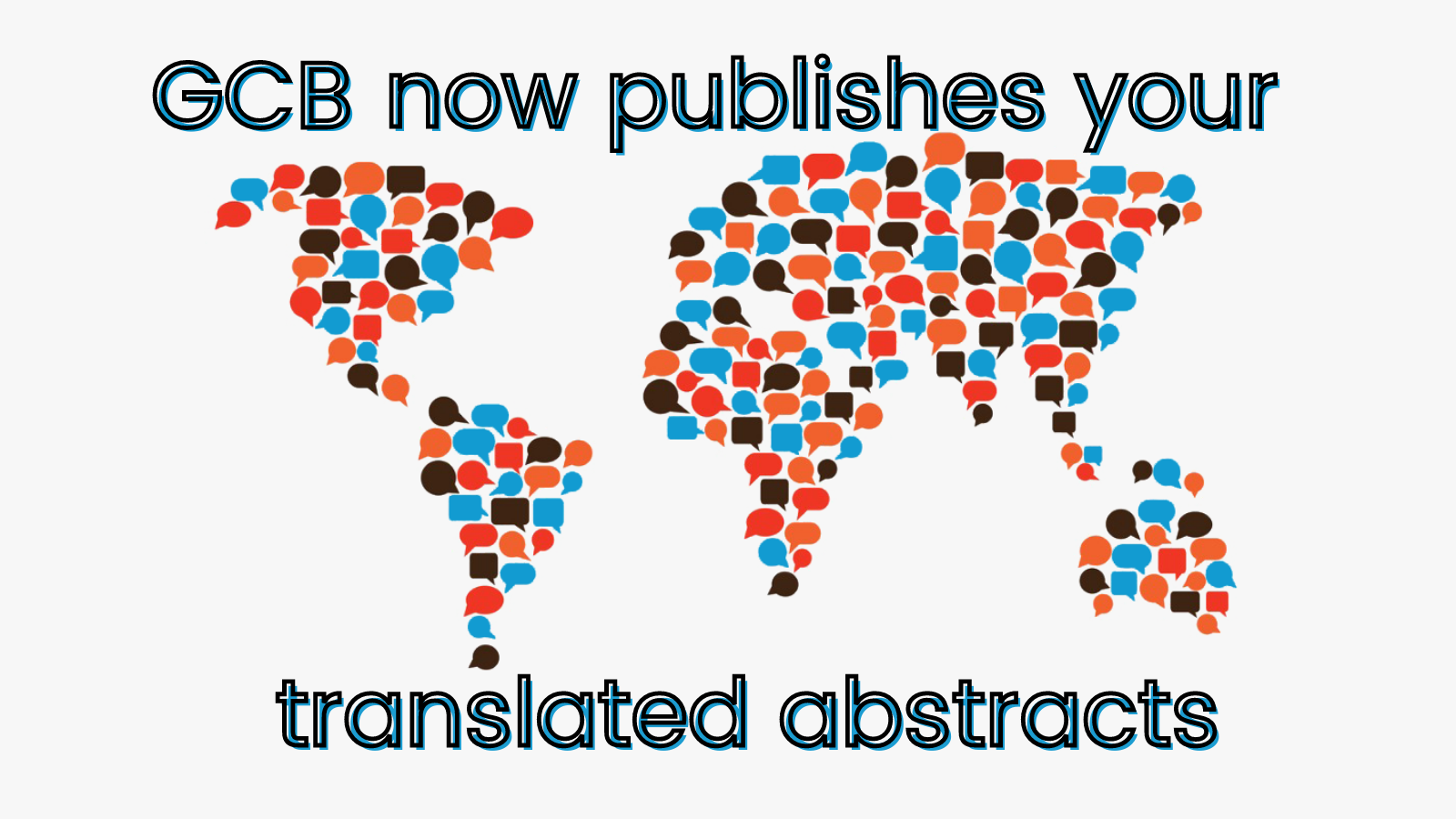Journal list menu
Export Citations
Download PDFs
ISSUE INFORMATION
EDITORIAL
Eating plants and planting forests for the climate
- Page: 3995
- First Published: 15 October 2019
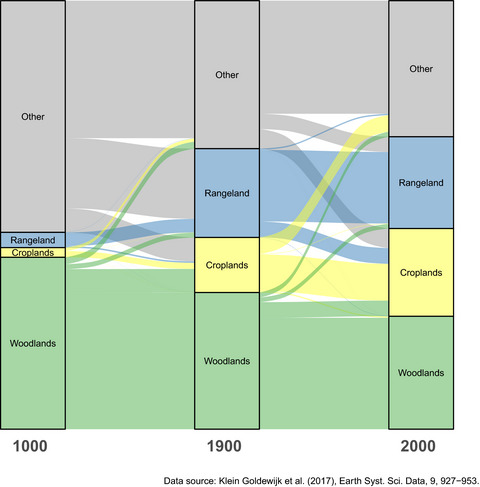
The IPCC's Special Report on Climate Change and Land addresses the closely coupled relationship between land use and climate change. The report notes the climate change mitigation potential of dietary shifts and afforestation. Here, we briefly discuss how decreases in ruminant meat consumption associated with dietary shifts have the potential to free up area for forests, allowing for greater CO2 sequestration and benefiting biodiversity, while simultaneously reducing anthropogenic CO2 emissions.
OPINION
Zones of influence for soil organic matter dynamics: A conceptual framework for data and models
- Pages: 3996-4007
- First Published: 06 August 2019

A new conceptual framework is proposed to improve our understanding of soil organic matter behaviour at depth: at any soil profile, two vertically distinct, dynamic zones of influence can be identified, an upper vegetation zone of influence (VZI), controlled by plant traits, and a lower mineral matrix zone of influence (MMZI), controlled by geochemical interactions. In the VZI, soil organic carbon (SOC) flux is upwards to the atmosphere (SOC mineralization to CO2), while in the MMZI, the SOC flux is downwards to deep soil storage (SOC stabilization and persistence), as it is suggested by SOC profiles in analogy to the ‘zero-flux plane’ concept in hydrology.
RESEARCH REVIEWS
Leveraging plant hydraulics to yield predictive and dynamic plant leaf allocation in vegetation models with climate change
- Pages: 4008-4021
- First Published: 29 August 2019
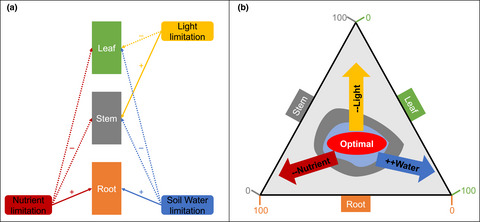
One important lever plants use to adjust water demand to local water availability is through changing carbon allocation to leaf area relative to water transport tissue area in the stem. This is because leaf area to stem area regulates water demand from leaves relative to supply capacity by the stem. In this review, we examine vegetation model representations of plant allocation to leaves, how allocation impacts mechanistic model-derived estimates of productivity, and methods for moving forward with representing allocation as an emergent property of scarce resource constraints in trait-based vegetation models.
Prevention is better than cure: Persian Gulf biodiversity vulnerability to the impacts of desalination plants
- Pages: 4022-4033
- First Published: 22 August 2019
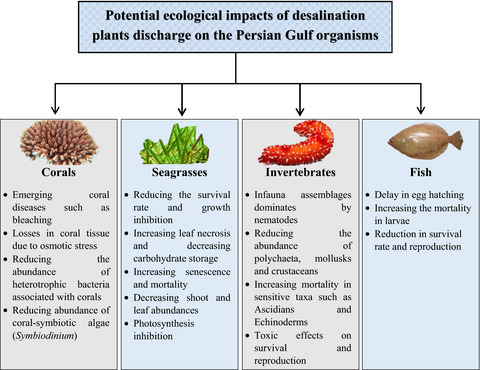
We found that increasing the input of desalination plant discharge into the Persian Gulf may have the following impacts: alter phytoplankton photosynthesis; increase benthic mortality; change chloroplast ultrastructure, decrease in chlorophyll content, enzyme activity, and electron flow inhibition in photosynthetic organisms; alter larval development and individual growth, larval survival rate and generation time; and result in a loss of fishery resources and economic activity. Furthermore, available data suggest that appropriately sited, designed, and operated desalination plants combined with current developments in impingement and entrainment reduction technology can mitigate many of negative ecological impacts of desalination plants.
PRIMARY RESEARCH ARTICLES
Genes on the edge: A framework to detect genetic diversity imperiled by climate change
- Pages: 4034-4047
- First Published: 23 June 2019
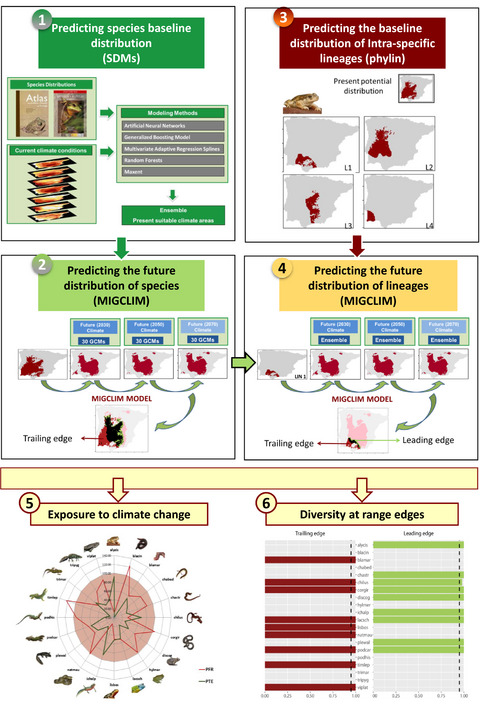
We introduce a framework to forecast exposure to climate change at the intraspecific level. We combined correlative species distribution models, a model of species range dynamics, and a model of phylogeographic interpolation. We applied the framework to 20 Iberian amphibian and reptile species. We found that about 80% of the studied species are predicted to contract their range. Within each species, some lineages were predicted to contract their range, while others were predicted to maintain or expand it. Therefore, estimating the impacts of climate change at the species level only can underestimate losses at the intraspecific level.
Climate change alters elevational phenology patterns of the European spruce bark beetle (Ips typographus)
- Pages: 4048-4063
- First Published: 16 July 2019
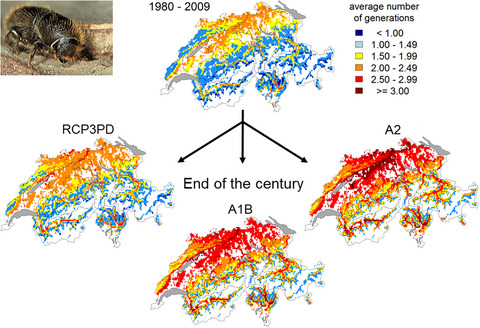
Already today the European spruce bark beetle Ips typographus is the most significant forest pest insect in Central Europe. We predict that climate change will increase the number of annual beetle generations, particularly at low elevations, and will pre-shift spring swarming, particularly at higher elevations. Altogether, these changes will result in a higher risk of mass infestations in European spruce forests.
Autumn bird migration phenology: A potpourri of wind, precipitation and temperature effects
- Pages: 4064-4080
- First Published: 05 July 2019
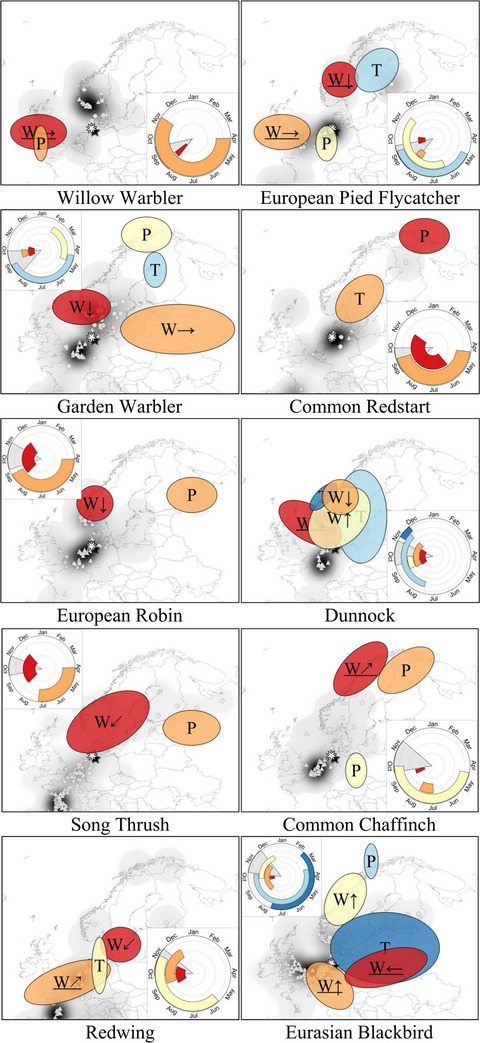
Explaining interspecific variation in autumn bird migration phenology trends has been challenging. We performed a spatially explicit time window analysis of weather effects on mean autumn passage of four trans-Saharan and six intra-European passerines at the island of Heligoland (Germany) over a 55-year period (1960–2014). Weather variables at the breeding and stopover grounds explained up to 80% of the species-specific interannual variability in autumn passage. Overall, wind conditions were most important, but the climatic contributions to the temporal trend in autumn migration phenology consisted of a potpourri of wind, precipitation and temperature effects.
Diverging phenological responses of Arctic seabirds to an earlier spring
- Pages: 4081-4091
- First Published: 31 July 2019
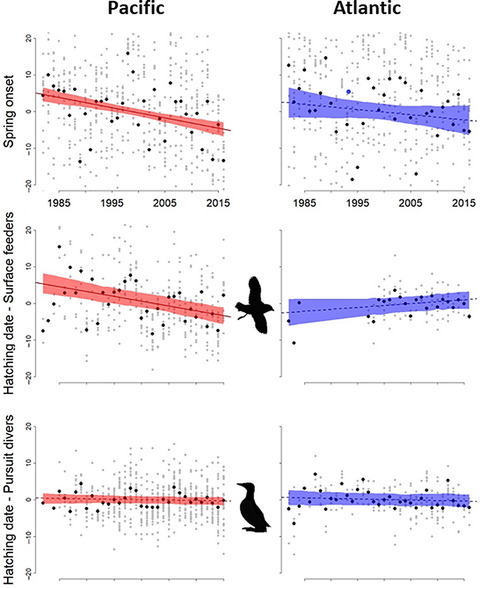
The timing of reproduction is a critical component of how free-living organisms respond to ongoing climate change, especially in the Arctic, which is disproportionally impacted by climate warming. Arctic seabirds respond to climate change by moving the start of their reproduction earlier, coincident with an advancing onset of spring, but their response is dependent on the ocean basin and foraging strategy. Surface-feeding species advanced their reproduction in the last 35 years while diving species showed remarkably stable breeding timing. The earlier reproduction for Arctic surface-feeding birds was significant in the Pacific only, where the spring advancement was most pronounced.
Extreme spatial heterogeneity in carbonate accretion potential on a Caribbean fringing reef linked to local human disturbance gradients
- Pages: 4092-4104
- First Published: 30 September 2019
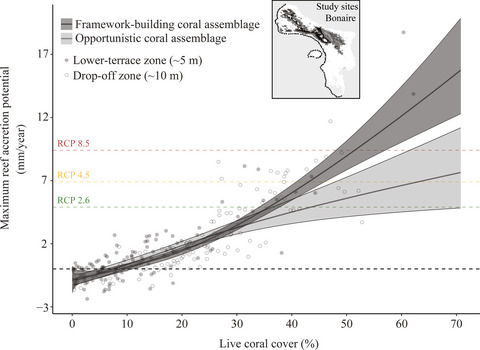
This elaborate asset of net accretion rates of the shallow (5 and 10 m depth) leeward coral reefs of Bonaire shows extreme spatial heterogeneity among 115 sites (points). The majority of the fringing reef – which allegedly ranks among the healthiest in the Caribbean – is, however, defined by a limited capacity to maintain structural integrity or to keep pace with projections of sea-level rise (RCP lines), thus posing a threat to ecological functioning, biodiversity and the ecosystem services it sustains. These observations suggest that only protection and restoration of framework building coral assemblages may avert future large-scale submergence of Caribbean reefs.
Selectively bred oysters can alter their biomineralization pathways, promoting resilience to environmental acidification
- Pages: 4105-4115
- First Published: 25 September 2019
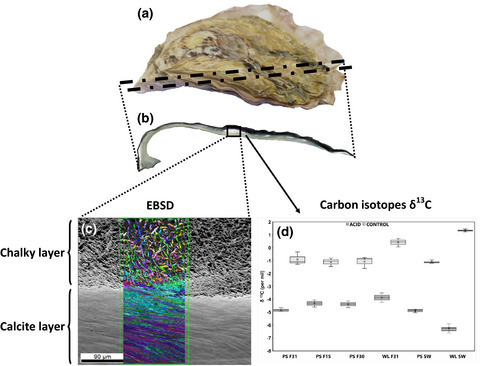
We characterized the crystallography and carbon uptake in the shells of the oyster Saccostrea glomerata being farmed in habitats subjected to acidification from land run-off using high-resolution electron backscatter diffraction and carbon isotope analyses (δ13C). Environmental carbon was linked with the changing carbon in the shell and differences in shell growth and crystallography across oyster families selectively bred for fast growth or disease resistance. We show that these oyster families can alter their mechanisms of biomineralization, promoting resilience to coastal acidification. Selective breeding in oysters is likely to be an important global mitigation strategy for sustainable aquaculture.
Temporal and spatial trends in marine carbon isotopes in the Arctic Ocean and implications for food web studies
- Pages: 4116-4130
- First Published: 09 September 2019
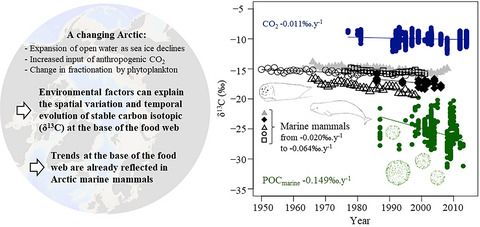
Warming of the Arctic has led to changes in multiple environmental factors that control the carbon isotope ratio at the base of the food web. Here, we present the first comprehensive spatial and temporal assessment of the carbon isotopic baseline for the Arctic Ocean, which is essential for understanding and predicting changes in Arctic food web structure. The response of the Arctic ecosystem to ongoing environmental change presented here is stronger than we would predict theoretically.
Multiple stressor effects on coral reef ecosystems
- Pages: 4131-4146
- First Published: 03 September 2019
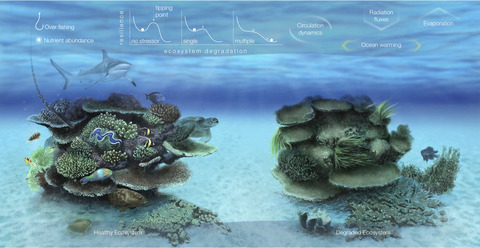
Multiple interactions between climate, fishing pressure and biogeochemical variables were associated with a high number of synergistic interactions for coral reef communities. Hard corals and coralline algae abundance were generally sensitive to changing environmental conditions where interactions decreased their percentage cover. These synergistic interactions suggest that the negative effects of fishing pressure and eutrophication may exacerbate the impact of climate change on corals. Artist Credit: Ivan Gromicho.
Integrating patterns of thermal tolerance and phenotypic plasticity with population genetics to improve understanding of vulnerability to warming in a widespread copepod
- Pages: 4147-4164
- First Published: 26 August 2019
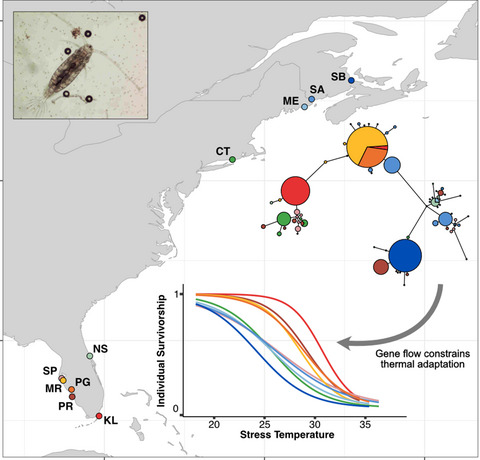
We examined the spatial patterning of thermal tolerance and the strength of phenotypic plasticity across a large latitudinal thermal gradient in a widespread copepod taxon. Population genetic analyses suggest that both gene flow and adaptation play important roles in shaping these patterns, and therefore, in determining vulnerability to climate change. Local adaptation, plasticity, and gene flow should all be considered when making predictions about the future of marine systems.
Ocean acidification and hypoxia alter organic carbon fluxes in marine soft sediments
- Pages: 4165-4178
- First Published: 18 September 2019
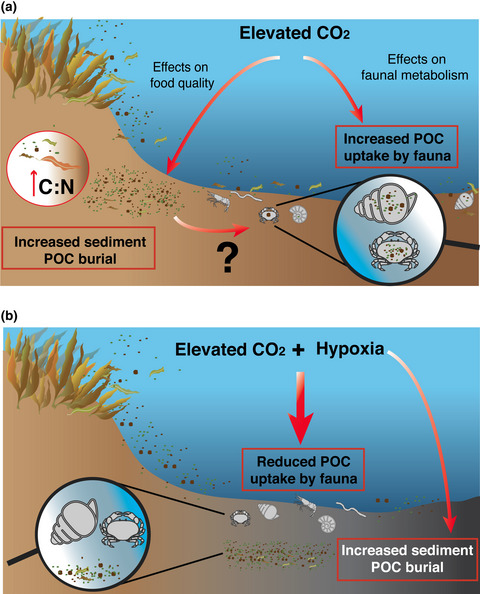
The combined effects of elevated CO2 and hypoxia on faunal-mediated carbon fluxes in marine soft sediments are still largely unknown. We used isotopically labelled algal detritus, a common source of organic matter supplied in coastal ocean, to assess carbon incorporation in faunal tissue and in sediment under different experimental conditions. We found that hypoxia hindered the increased carbon uptake by fauna observed at elevated CO2, limiting the ability of benthic communities to withstand future ocean acidification scenario. In addition, both hypoxia and elevated CO2 increased sediment carbon burial, likely due to the modifications of faunal-mediated pathways and resource quality.
Biomineralization plasticity and environmental heterogeneity predict geographical resilience patterns of foundation species to future change
- Pages: 4179-4193
- First Published: 20 August 2019
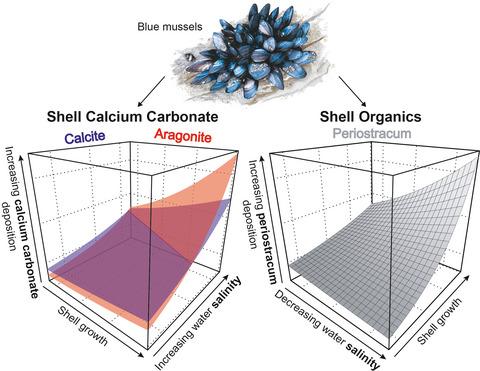
Little is known about compensatory processes shaping regional differences in organismal vulnerability. We examined large-scale spatial variations in biomineralization under heterogeneous environmental gradients across a 30° latitudinal range in critical foundation species, the blue mussels Mytilus edulis and M. trossulus. Salinity was the best predictor of within-region differences in mussel shell deposition, mineral and organic composition. We identified biomineralization plasticity as a potential compensatory mechanism conferring Mytilus species a protective capacity for quantitative and qualitative trade-offs in shell deposition as a response to regional alterations of abiotic and biotic conditions in future environments.
Red Sea corals under Artificial Light Pollution at Night (ALAN) undergo oxidative stress and photosynthetic impairment
- Pages: 4194-4207
- First Published: 11 September 2019
Projecting marine species range shifts from only temperature can mask climate vulnerability
- Pages: 4208-4221
- First Published: 05 September 2019
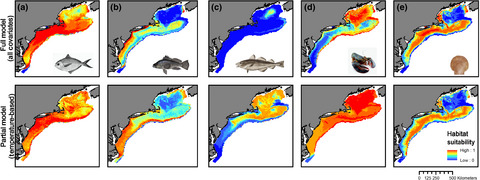
Climate change research predicting marine species' range shifts has mainly focused on expected responses to changing ocean temperatures, overlooking how other environmental covariates could affect future distribution patterns. We explore how this emphasis on ocean temperature could impact species' climate vulnerability assessments, comparing outputs from temperature-based habitat suitability models to those that include multiple environmental covariates. We find that multifactor models perform better in explaining and predicting species' historical distribution patterns. These models also make more concerning projections for species' future distribution patterns, that is, that species' ranges will largely shift northward and become more contracted and fragmented over time.
Homogenization of freshwater lakes: Recent compositional shifts in fish communities are explained by gamefish movement and not climate change
- Pages: 4222-4233
- First Published: 10 September 2019
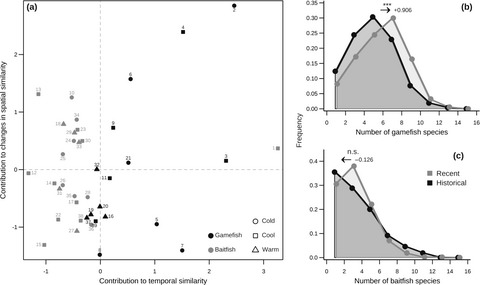
In the Neoartic realm, freshwater fish communities are homogenizing. We investigated the role of two major drivers of the recent changes in the structure of freshwater fish communities: recreational fishing versus climate change. The most important finding of our work is that while climate change and species thermal preferences poorly explain recent compositional shifts, we observed a striking contrast between gamefish and baitfish species. While the former thrives, the latter declines leading to a strong homogenization dominated by the colonization of gamefish species.
Methane emissions from contrasting urban freshwaters: Rates, drivers, and a whole-city footprint
- Pages: 4234-4243
- First Published: 14 August 2019
Arctic shrub colonization lagged peak postglacial warmth: Molecular evidence in lake sediment from Arctic Canada
- Pages: 4244-4256
- First Published: 11 October 2019
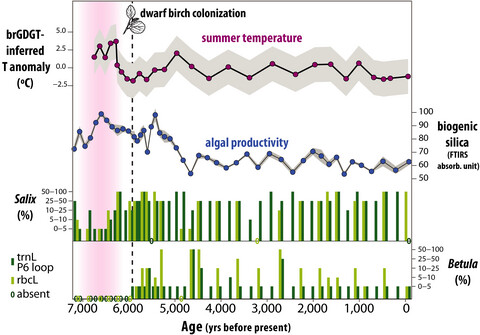
Ancient plant DNA in a lake sediment record from the Eastern Canadian Arctic constrains postglacial colonization of dwarf birch to 5,900 years ago, which was ~3,000 years after local deglaciation and at least 1,300 years after other tundra plants were established. We place this vegetation history into a climatic context using lipid biomarker paleothermometry, demonstrating that Betula colonization was delayed relative to peak postglacial warmth. This colonization timing is >2,000 years after birch pollen appears in adjacent lake sediment, highlighting the influence of exotic pollen fluxes on palynological records and underscoring the utility of sedimentary DNA for determining local plant presence.
Drivers of productivity and its temporal stability in a tropical tree diversity experiment
- Pages: 4257-4272
- First Published: 05 September 2019
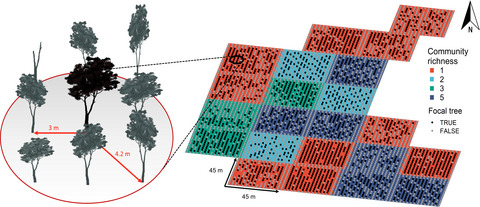
Millions of hectares of degraded land in the tropics and subtropics are targeted for restoration with tree plantations. To assess whether this might be best achieved with mixed-species plantations, we analysed the effects of species diversity and structural diversity on productivity and its temporal stability in the oldest tropical tree diversity experiment. At the tree neighbourhood- and community-level, diversity enhanced productivity and its stability in mixed compared to monospecific stands. Beneficial diversity effects increased with stand development and were highest at the highest levels of diversity and strongest under drought conditions.
Newer and select maize, wheat, and rice varieties can help mitigate N footprint while producing more grain
- Pages: 4273-4281
- First Published: 16 August 2019

We present clearer, stronger, and multitiered evidence to support the novel conclusion that newer and select maize, wheat, and rice varieties developed in China help mitigate N footprint while producing more grains. Individual varieties differed markedly in yield- emission scores. A nationwide farmer survey (2.47 million responses) indicated tremendous opportunities for a new way of management intervention. Coupling variety selection with sound N and other agronomic management can help lower N footprint while producing more grain.
Shortened temperature-relevant period of spring leaf-out in temperate-zone trees
- Pages: 4282-4290
- First Published: 31 July 2019

In this study, we found that the advancing leaf-out was accompanied by a shortening length of temperature-relevant period (TRP) in six dominant tree species mainly located in central Europe during 1951–2016. We tested different hypotheses, and found that the advanced leaf-out and unchanged start of TRP might be explained by sufficient chilling and faster accumulation of the required heat due to climatic warming, which overcompensated for the retarding effect of shortening daylength on bud development. These results implicate that phenology modules in global land surface models might be reliable assuming a fixed TRP starting date at least for temperate central Europe.
Effect of land-use and land-cover change on mangrove blue carbon: A systematic review
- Pages: 4291-4302
- First Published: 27 August 2019
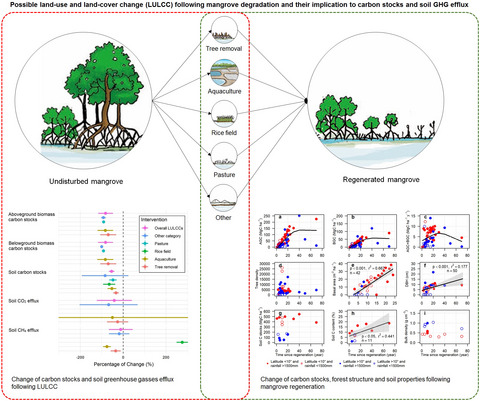
We undertook a systematic review to examine the influence of land-use and land-cover change (LULCC) on mangrove carbon stocks and soil greenhouse gas effluxes. A search of 478 data points from peer-reviewed literature revealed a substantial reduction of biomass (82% ± 35%) and soil (54% ± 13%) carbon stocks due to LULCC. The relative loss depended on LULCC type, time since LULCC and geographical and climatic conditions of sites. Regeneration efforts (i.e. restoration, rehabilitation and plantation) led to biomass recovery after ~40 years. However, we found no clear patterns of mangrove soil carbon stocks re-establishment following biomass recovery.
Synergistic and antagonistic effects of land use and non-native species on community responses to climate change
- Pages: 4303-4314
- First Published: 10 August 2019
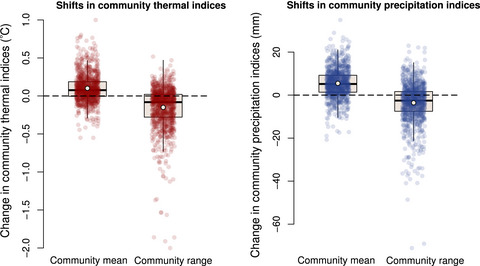
We found that plant community composition at landscape scales has shifted in response to warming temperatures and increased precipitation during the 20th century, with other major drivers of global change affecting the occurrence and magnitude of these shifts. Colonizations by warm-adapted species, particularly non-natives, have contributed to community-level warming, at the expense of species more poorly adapted to the direction of climate change. However, widespread landscape simplification in the form of increased forest cover appears to have had a buffering effect on community shifts following climate warming.
Non-native mangroves support carbon storage, sediment carbon burial, and accretion of coastal ecosystems
- Pages: 4315-4326
- First Published: 29 August 2019
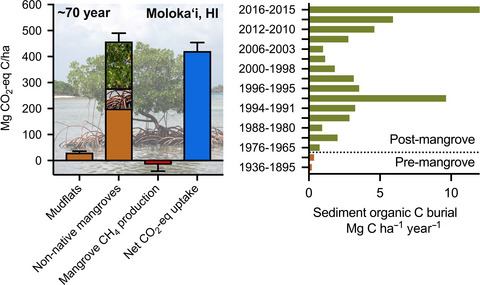
Mangroves play an important role in climate change mitigation via coastline protection and carbon burial. Examining recently established, non-native mangrove stands in Hawai‘i, we show that mangrove forests accrue substantial carbon stocks within several decades after introduction. Mangrove establishment results in a significant net removal of greenhouse gases from the atmosphere and also increases shore height faster than sea level rise, impacts that should be considered during decision-making for mangrove management.
Uncovering hidden genetic variation in photosynthesis of field-grown maize under ozone pollution
- Pages: 4327-4338
- First Published: 01 October 2019
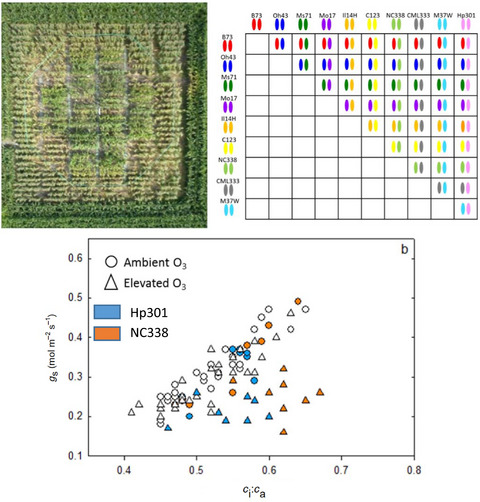
Ozone is the most damaging air pollutant to crops, currently reducing Midwest US maize production by up to 10%. In this study, 10 diverse inbred parents were crossed in a half-diallel design to create 45 F1 hybrids, which were tested for ozone response in the field using Free Air Concentration Enrichment (FACE). Ozone stress increased the heritability of photosynthetic traits and altered genetic correlations among traits. FACE technology was essential to this evaluation because genetic variation in photosynthesis under elevated ozone was not predictable based on performance at ambient ozone.
Cold spot microrefugia hold the key to survival for Brazil's Critically Endangered Araucaria tree
- Pages: 4339-4351
- First Published: 13 July 2019
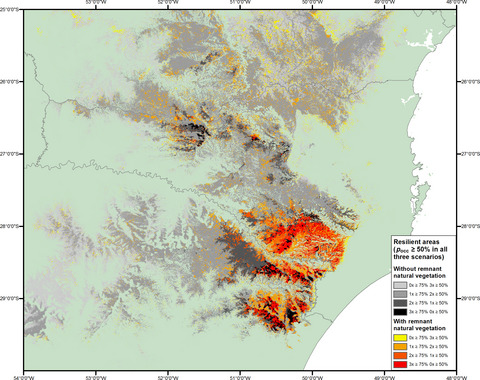
Twenty-first-century climate change will reduce the resilience of Brazil's Araucaria tree (Araucaria angustifolia), with small-scale topographic microrefugia becoming key to its persistence. However, more than a third of these have already lost their natural vegetation, and only 2.5% of what remains is in any protected area.
Yield response of field-grown soybean exposed to heat waves under current and elevated [CO2]
- Pages: 4352-4368
- First Published: 14 August 2019
![Yield response of field-grown soybean exposed to heat waves under current and elevated [CO2]](/cms/asset/1fe50769-cdef-4e08-982b-c1ceb4bab7a9/gcb14796-toc-0001-m.jpg)
High-intensity heat waves imposed on field-grown soybean during key reproductive stages reduced seed yield, even under elevated [CO2]. However, low-intensity heat waves increased yield with greater increases in elevated [CO2] than in ambient [CO2] conditions. Differences between measured yields and simulated yields based on carbon assimilation alone suggest that direct heat stress on reproductive processes played a role in determining actual yields.
Anthropogenic N deposition alters soil organic matter biochemistry and microbial communities on decaying fine roots
- Pages: 4369-4382
- First Published: 17 July 2019
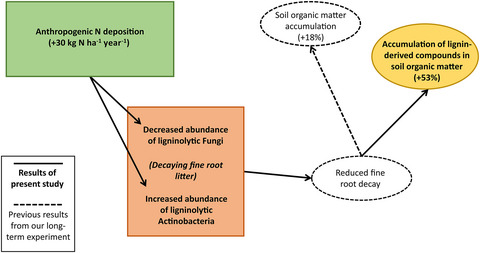
Experimental nitrogen deposition (ca. 20 years) has slowed fine root decay and increased soil carbon across a widespread northern hardwood forest ecosystem, but the microbial mechanisms underlying this response are unknown. Here, we show that experimental N deposition has reduced the relative abundance of ligninolytic fungi and increased that of bacteria with weaker ligninolytic capacity on decaying fine root litter. These responses are correlated with an accumulation of lignin-derived compounds in soil organic matter, of which fine root litter is the primary source. Thus, anthropogenic nitrogen deposition may enhance terrestrial carbon storage by altering microbial community composition on decaying fine roots.
Climate warming alters subsoil but not topsoil carbon dynamics in alpine grassland
- Pages: 4383-4393
- First Published: 03 September 2019
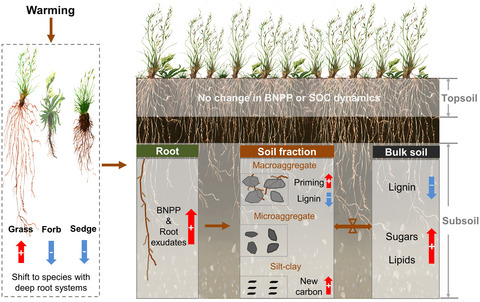
Warming, accompanied by enhanced growth of deep-rooted grasses, is shown to cause substantial changes in subsoil carbon dynamics of a Qinghai-Tibetan grassland. Subsoils under warming show new carbon accumulation in the silt-clay fraction, increased concentrations of sugars and lipids as well as enhanced degradation of lignin likely due to labile-carbon-stimulated cometabolism. The above shifts stand in contrast to the unaltered belowground net primary productivity and soil carbon dynamics in the topsoil, underscoring the high sensitivity of deep soil carbon cycling to warming in the alpine grassland.




